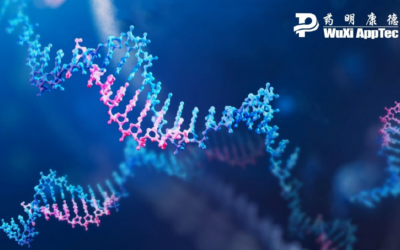U.S. Pharmacopeia (USP) recently issued two new chapters (665/1665) on production equipment and patient safety for polymeric components and systems used in biomanufacturing. These new requirements demonstrate a heightened focus on the extractables and leachables in the plastic components contained in single-use systems.
Extractables/leachables (E/L) testing is not new, but with evolving technology, the expectation of complete chemical characterization continues to increase. USP <665> and <1665> will not grandfather in products that are already on the market, so proactive manufacturers are starting with E/L testing for existing products now.
Your data quality depends on the skills and experience of the chemists and the laboratory conducting the testing. Here are five questions manufacturers need to ask before choosing a testing partner.
What is included in my quote?
Some E/L laboratories provide a quote for running the analytical methods but often do not include commitment to complete identification included in that cost. Clarify that the quote includes timing and budget for data analysis, including complete identification.
- Be on the lookout for exceptions that may limit the labs responsibilities for complete identification
- Confirm that your timeline starts when the project is received, not when the lab gets around to starting your project
- Ensure a full range of analytical methods (GC-MS, LC-MS, ICP-MS) and an appropriate number of solvents and replicates are included to meet the regulatory requirements
- Verify the lab will support all regulatory inquiries related to the testing
What is your track record for complete identification?
As demand for chemical characterization services increase, many labs are jumping on the E/L bandwagon for the first time. For full E/L capabilities, laboratories need to have invested in sensitive equipment, well trained technicians, and expert chemists capable of compound elucidation to deliver complete characterization. . If you are paying for chemical characterization, you should not see unknowns in your chemistry report and you should not be expected to pay additional fees for identification. Ask your laboratory partner how many E/L programs they have completed and how frequently unknowns are reported.
What is your approach to reporting unknown chemicals? How often do you report unknowns?
Complete chemical characterization requires the identification of every chemical compound in your product found above the analytical threshold determined for your product. While commercially available libraries can help identify some chemicals present in extracts, they are not necessarily reliable in every circumstance. Reporting unidentified compounds can result in an unfavorable safety assessment, sending you to the back of the line for another round of testing. Having to retest products increases cost and lead times. Identifying every compound should be the manufacturers’ expectation when choosing a testing partner.
Do you offer follow-up support once a submission is ready for regulatory approval?
While the testing process is paramount, seeking a partner that provides post-submission support ensures that everything runs smoothly from start to finish. If regulators have questions or ask for additional information, your partner should be available to provide guidance. The lab should be able to stand behind and justify the program and protocols utilized if regulators inquire. This service should be included as part of your E/L program. Even after a submission, partnerships should continue on through the lifecycle of the product.
How does your staff stay up-to-speed on the changing regulatory expectations?
You will want to work with a lab testing partner staffed with experts familiar with the evolving regulatory landscape and extensive experience with chemistry and toxicological risk/safety assessments. Do your due diligence in learning about a potential lab partner’s familiarity and comfort with the latest regulatory requirements before inking any agreements. This will inspire confidence in your submission package and ensure your product isn’t derailed during submission due to insufficient understanding of current regulatory expectations.
The answers to these questions will put you on the right path to gauge whether a potential testing partner can meet your needs. To learn more, contact a WuXi AppTec expert.


